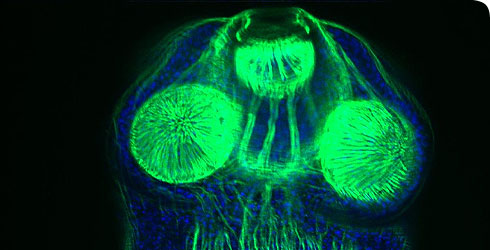Physiology
Cytology
Like all flatworms (phylum Platyhelminthes), H. microstoma maintains totipotent stem cells (called ‘neoblasts’ in flatworms) throughout its life cycle. These are located in the ‘neck’ region of the adult worms and are responsible for the continual production of new organs during the process of strobilation (segment formation).
Neoblasts divide in the neck region and become incorporated into new segments where they eventually differentiate into the reproductive organs and other elements of the body.
The diploid chromosome number of H. microstoma is 12 and the total genome size has been estimated by the Sanger Institute to be 1.18 megabases (ie. 1,180,000 nucleotides) with G-C content of ~ 35%. These values are similar to the genomes of the fox tapeworm Echinococcus multilocularis and the pig taepworm Taenia solium. All three species belonging to the tapeworm order Cyclophyllidea. Genome sizes outside of this order are presently unknown.
Molecular biology
As befitting a model organism, the genome and transcriptome (expressed genes) are currently being characterized by researchers at the NHM (see the Olson Lab website) and the Sanger Institute.
